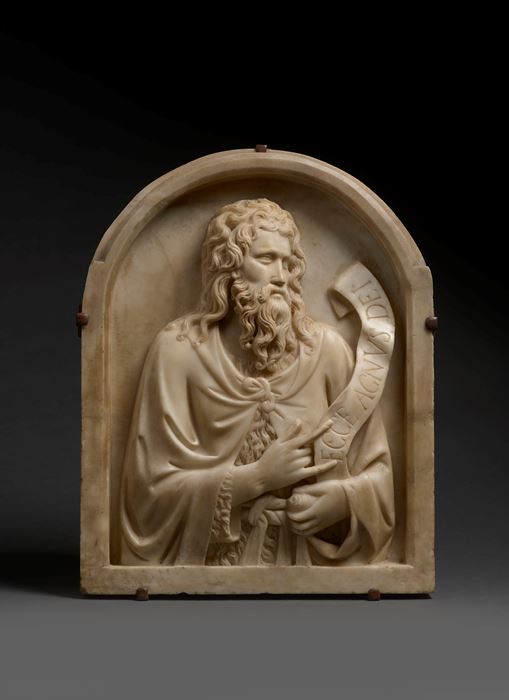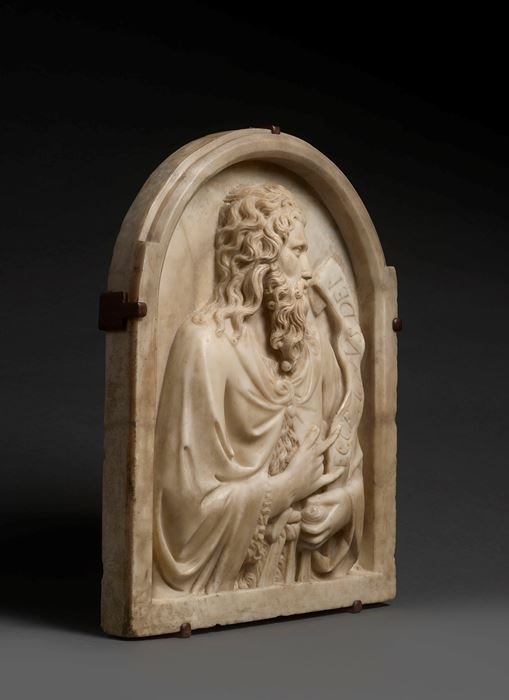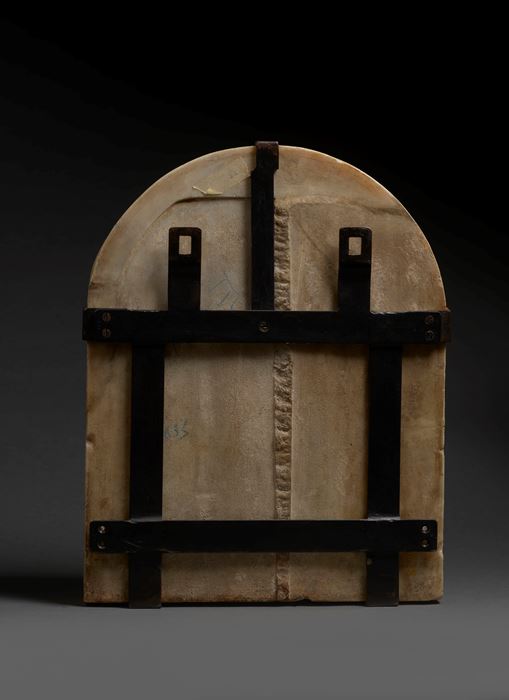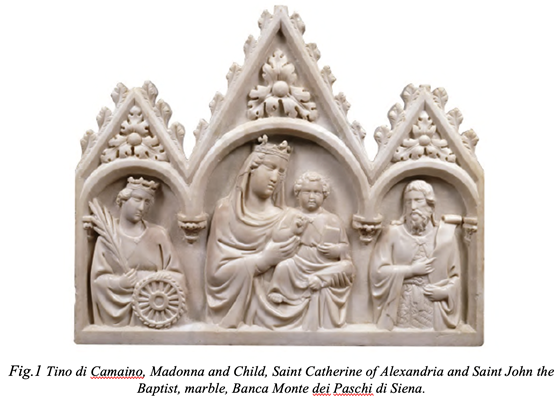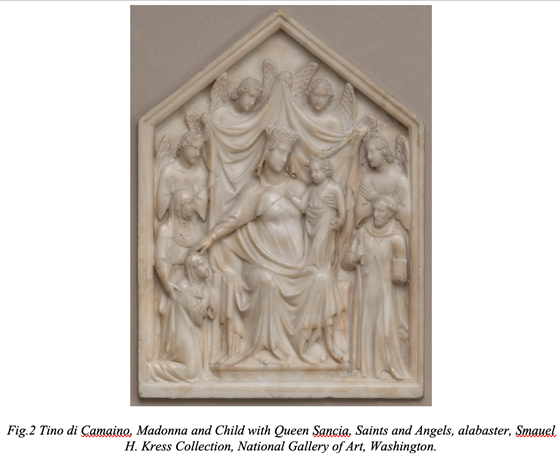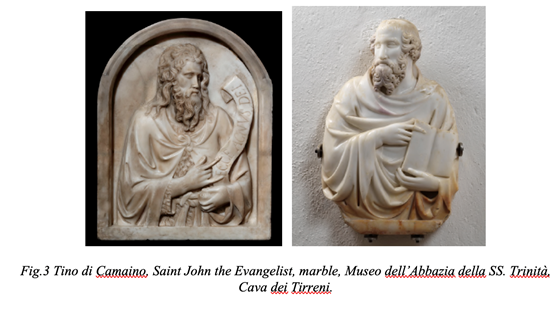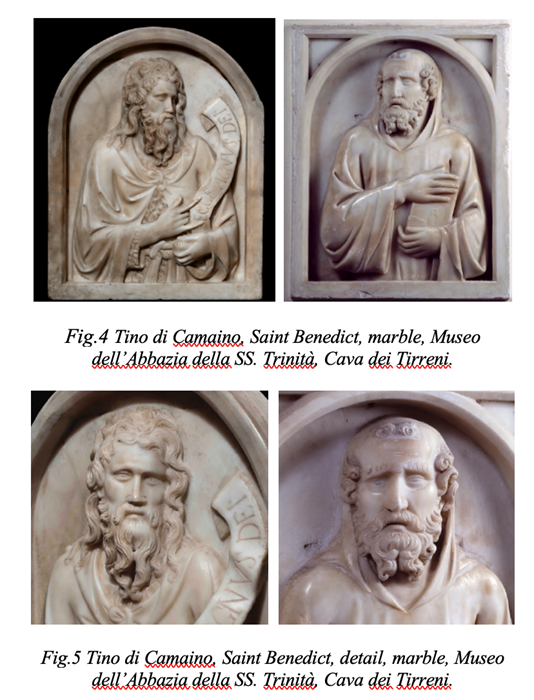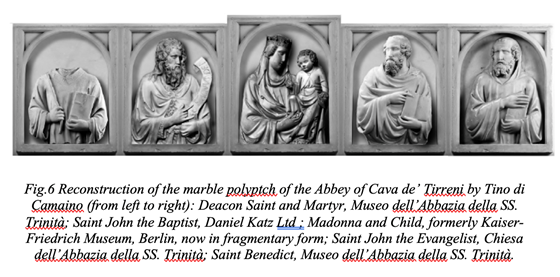Description & Technical information
Tino di Camaino: a rediscovered masterpiece from Cava dei Tirreni (see further images for Figure illustrations)
The Saint John the Baptist, which is new to art-historical scholarship, stands out as an exceptionally important work by Tino di Camaino (1285-c.1336), the Sienese sculptor long active in Pisa and Florence, but especially in Naples, where he was in the service of the Royal court of Anjou. The relief was created in the middle of the sculptor's Neapolitan sojourn, around 1330, in what was one of the most complex and prestigious phases of his entire career. Indeed, one can link it - both in terms of style and its outstanding quality - to the works which are the most characteristic of this period: the triptych representing the Virgin and Child, Saint Catherine and Saint John the Baptist (Fig.1), now in the collection of the bank of Monte dei Paschi di Siena, once part of a small-scale marble polyptych, sculpted both on the front and the reverse (the latter with a Pietà with the grieving Mary and Saint John, now part of the collection of the architect Simonpietro Salini, near Asciano, Siena); the small relief, a royal commission, with the Virgin and Child, angels, Saint Francis, Saint Claire and female donor (this was Queen Sancia of Majorca, wife of the King, Robert of Anjou) which is now in the National Gallery of Art, Washington (Fig.2, Samuel H. Kress Collection, 1960.5.1), as are also the marble works carved for the Benedictine Abbey of Cava de’ Tirreni near Salerno.
What the Saint John the Baptist has in common with these works is the artist's pursuit of a monumentality in his figures which is at the same time soft and polished to the point of suggesting the transparency of alabaster, which is indeed the material out of which is carved the small altarpiece commissioned by Queen Sancia in Washington. These are the years in which Giotto is also at the service of Robert of Anjou (1328-1331) and Tino di Camaino engages in a serried contest with the art of painting, emulating its chiaroscuro effects in the marble, and carving precise equivalents of contemporary paintings: small panels for personal devotion (such as the one for Queen Sancia), small tryptychs, and polyptychs destined for altars.
Fig.1 Tino di Camaino, Madonna and Child, Saint Catherine of Alexandria and Saint John the Baptist, marble, Banca Monte dei Paschi di Siena.
Fig.2 Tino di Camaino, Madonna and Child with Queen Sancia, Saints and Angels, alabaster, Smauel H. Kress Collection, National Gallery of Art, Washington.
Fig.3 Tino di Camaino, Saint John the Evangelist, marble, Museo dell’Abbazia della SS. Trinità, Cava dei Tirreni.
Fig.4 Tino di Camaino, Saint Benedict, marble, Museo
dell’Abbazia della SS. Trinità, Cava dei Tirreni.
Fig.5 Tino di Camaino, Saint Benedict, detail, marble, Museo
dell’Abbazia della SS. Trinità, Cava dei Tirreni.
Fig.6 Reconstruction of the marble polyptch of the Abbey of Cava de’ Tirreni by Tino di Camaino (from left to right): Deacon Saint and Martyr, Museo dell’Abbazia della SS. Trinità; Saint John the Baptist, Daniel Katz Ltd ; Madonna and Child, formerly Kaiser-Friedrich Museum, Berlin, now in fragmentary form; Saint John the Evangelist, Chiesa dell’Abbazia della SS. Trinità; Saint Benedict, Museo dell’Abbazia della SS. Trinità.
Fig.7 Tino di Camaino, Virgin and Child with Saints Benedict and Alfiero presenting the donor Abbot Filippo de Haya, marble, Museo dell’Abbazia della SS. Trinità, Cava dei Tirreni.
The refined formal quality of the newly discovered relief indicates not only that it was carved by the hand of Tino di Camaino himself without any major contribution from the workshop, but also the high rank of the patron. Its links, both through its material and its stylistic characteristics, are indeed to some of the most successful marble works in the abbey of Cava dei Tirreni, such as the Saint John the Evangelist for instance (Fig.3), a work in high relief from which the background and frame have been chiselled away, and the Saint Benedict (Figs.4 and 5) which is still whole, in its original format. The dimensions of the relief and the shape of its frame indicate that the Saint John the Baptist is the missing panel of the marble polyptych destined for the Abbey church of Cava, of which the other elements – some in a fragmentary condition – are known. W.R.Valentiner in his 1935 monograph on the sculptor had already identified its centre piece as the Virgin and Child formerly in the Kaiser-Friedrich-Museum in Berlin; shattered during the Second World War, the fragments of this work are now preserved in the stores of the Pushkin Museum, Moscow. Flanking this on the right were the Saint John the Evangelist and the Saint Benedict, the former in the museum adjoining the abbey, and the latter in the church of Cava; on the left, in the prime position befitting the last of the prophets and Christ's precursor, stood the Saint John the Baptist, and next to him a Deacon saint and martyr which can be seen in the Cava museum (Museo dell’Abbazia della SS. Trinità), now headless and with the body chiselled free of its setting (see reconstruction, Fig.6).
The altarpiece must have been destined for a subsidiary altar in the Abbey church of Cava. On the principal altar there stood a great marble altarpiece, also carved by Tino di Camaino, long dismembered, to which belonged the Virgin and Child with Saints Benedict and Alfiero presenting the donor (Fig.7) which can be admired today in the museum of the abbey. An inscription on the step of the altarpiece relates that the donor was the Abbot Filippo de Haya. The inscription was transcribed in the late eighteenth century by Salvatore Mattia de Blasi in his Chronicon ex Tabularii SS.ae Trinitatis Cavae Priscis Monumentis excerptum: “Frater Philippus de Haya Abbas huius Monasterii ad honorem Dei fieri fecit Tabulamistam” (1780 circa, Archivio della Badia di Cava de’ Tirreni, coll. XIII, 172, c. 112v). The figure of the abbot is crucial to understanding the circumstances which promoted the involvement of Tino di Camaino in the projects for the altars of Cava de’ Tirreni, at the time still one of the most important and powerful abbeys in the kingdom. Abbot Filippo de Haya, who was in charge from 1316 to 1331, was part of the retinue of King Robert of Anjou, and counselor "a latere". He was therefore in a perfect position to commission works from the court sculptor. Moreover, the abbot's brother (Giovanni de Haya), in his position as chamberlain to the king between 1325 and 1336, is referred to on several occasions in Angevin documents as being responsible for the construction work of the Certosa di San Martino and the castle of Belforte, work entrusted to Tino di Camaino and Francesco di Vito.
It is impossible to establish whether the polyptych was removed from the altar and then dismembered at the same time as the altarpiece from the main altar. The latter was still in situ around 1780 when de Blasi referred to it and must therefore have been taken apart in the nineteenth century. At the time when the relief representing Saint John the Baptist was disassembled from the polyptych, the reverse of the marble panel underwent considerable thinning, a layer of marble being removed both from the right and the left. The central portion is thicker and protruding, the marble thinned with a chisel. Either side of the saint's head the marble is so thin that if the relief is lit from the reverse, it appears transparent. At that juncture, the intention must have been to chisel away the background around the figure of the saint, as was done for its pendant, the Saint John the Evangelist, and also in the instance of the Deacon saint and martyr. In the bottom left-hand corner of the relief, a 45° incision was made, and from this point a 'surgical' cut along the contour of the figure; this cut resulted in a fracture on the left and the shattering of part of the marble above the head, which in all likelihood acted as a deterrent thus bringing the operation to a halt. As a result, in the upper sector, a large portion of the bevelled frame is carved out of a replaced piece of marble which is assembled with the original.
Abstract from the article by Professor Roberto Bartalini. Publsihed in Prospettiva, January 2019
Date: Circa 1330
Medium: Marble
Dimensions: 49.5 x 38.5 cm (19¹/₂ x 15¹/₈ inches)
Provenance: Abbazia della SS. Trinità della Cava in Cava de’ Tirreni, Salerno
Possibly with William St. John Brodrick, 1st Earl of Midleton, (1856 – 1942) Peper Harow, Surrey
Collection of Guinevere Brodrick, Countess of Midleton, (1885 – 1979), Eastwell Park, Kent
By descent to Captain George Brodrick and Mrs Brodrick, Dunley Manor, Hampshire
Literature: R. Bartalini, “Tino di Camaino, un riscoperto ‘San Giovanni Battista’ e i marmi della badia di Cava dei Tirreni”, in Prospettiva, n. 173, January 2019, pp.46-60
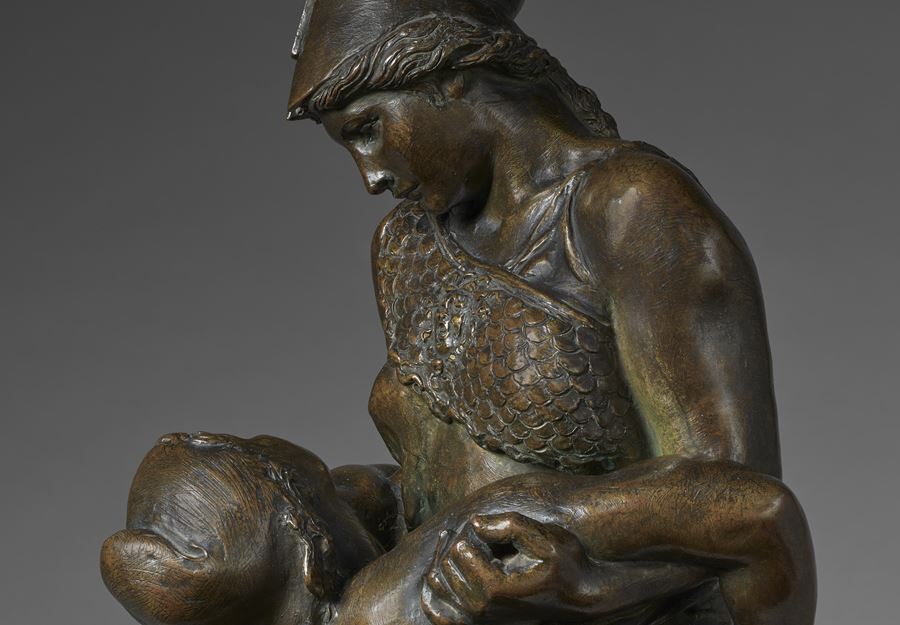
Discover the gallery
Daniel Katz Gallery
Fine Art from Antiquity to the Twentieth Century
More Works From This Gallery
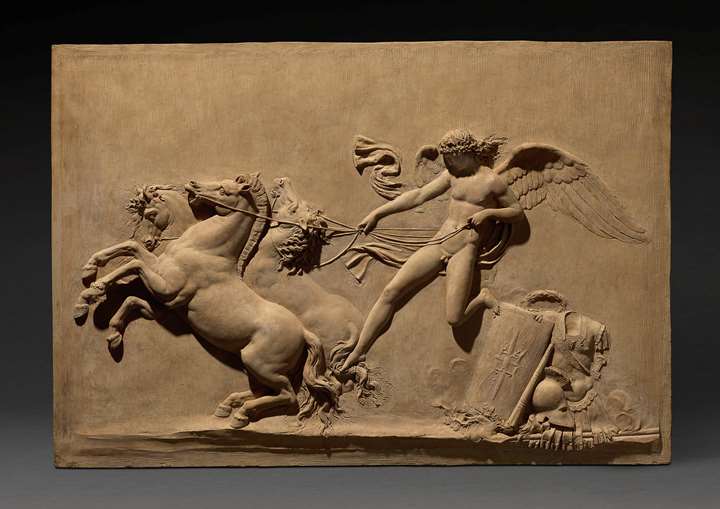
Daniel Katz Gallery
The Genius of Peace taming the Horses of Mars
Joseph Chinard (1756 - Lyon, 1813)
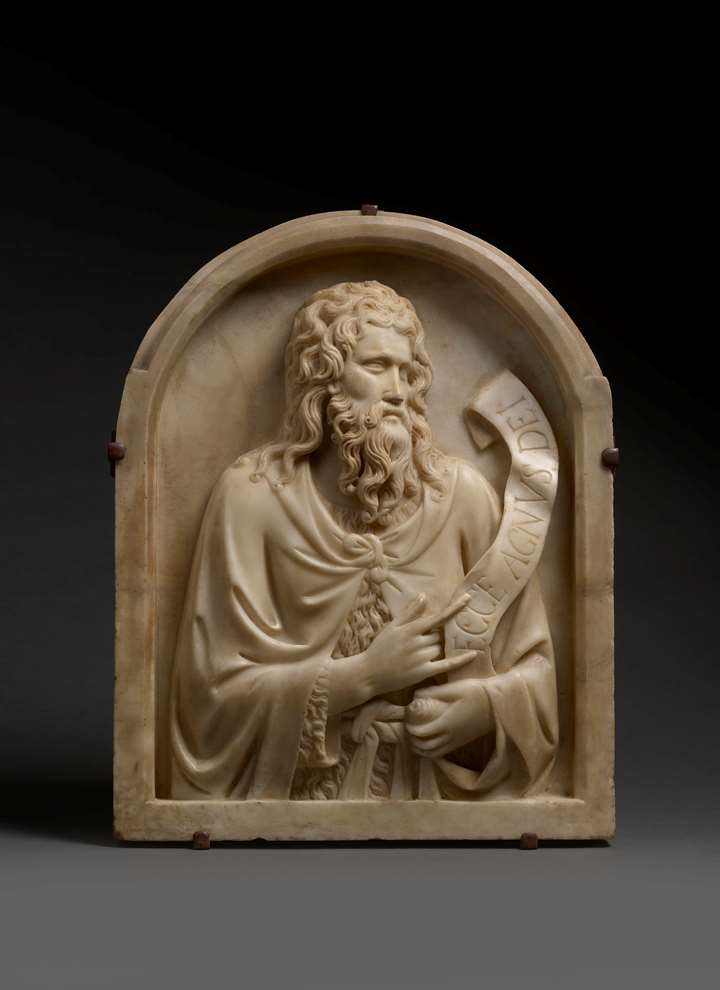
Daniel Katz Gallery
St John the Baptist
Tino da Camaino (Siena, c.1285 - Naples, 1337)
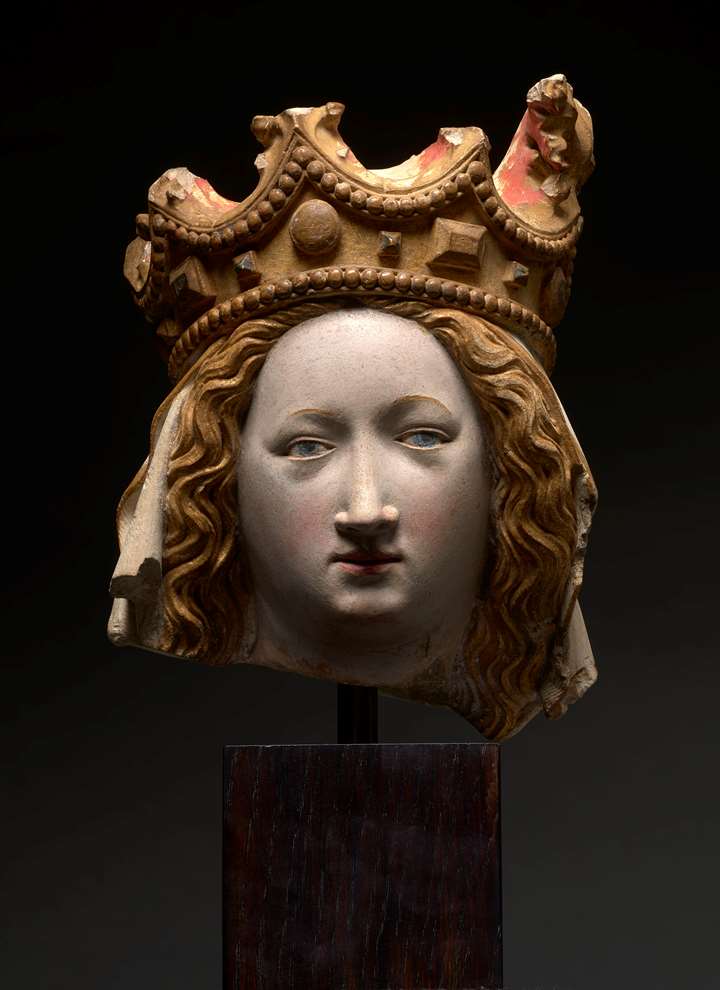
Daniel Katz Gallery
Head of the Crowned Virgin
Circle of André Beauneveu (1335 - 1402)
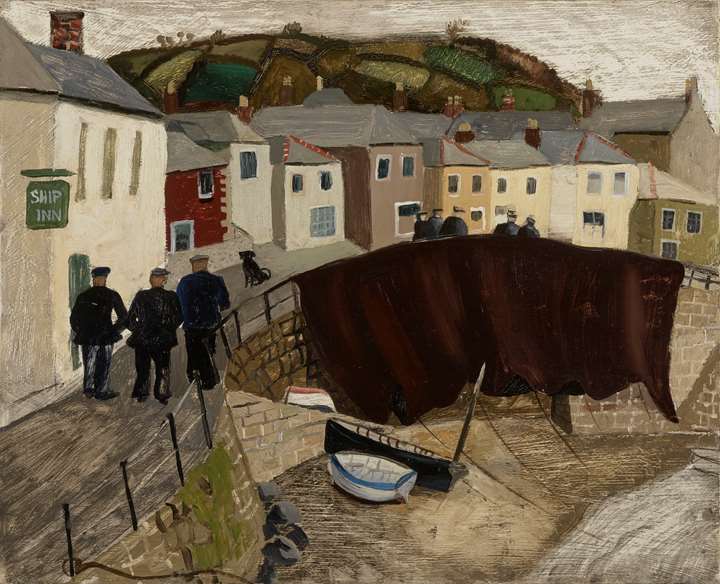
Daniel Katz Gallery
Drying Sails, Mousehole, Cornwall
Christopher WOOD (Knowsley, 1901 - Salisbury, 1930)
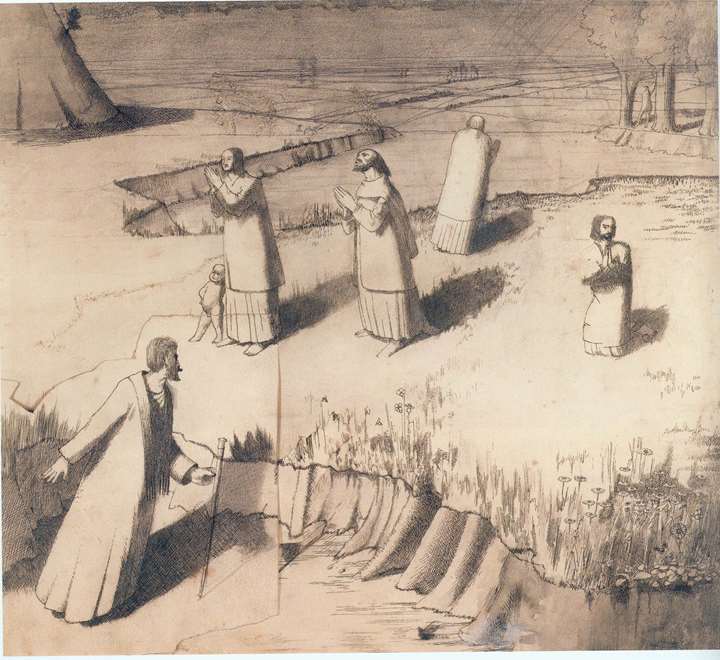
Daniel Katz Gallery
John Donne arriving in Heaven
Sir Stanley Spencer (Cookham, 1891 - Cliveden house, Taplow, 1959)

Daniel Katz Gallery
Still life with Mandolin
Glyn Philpot (London, 1884 - 1937)

